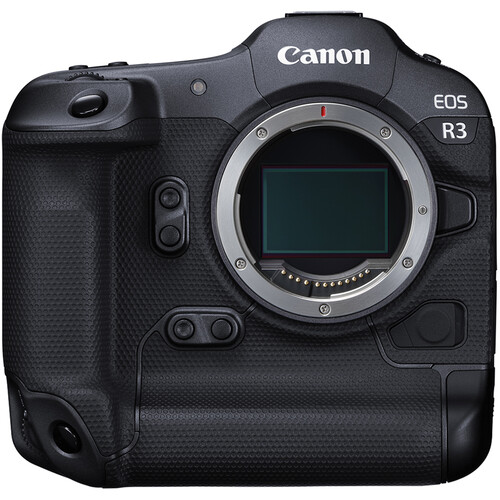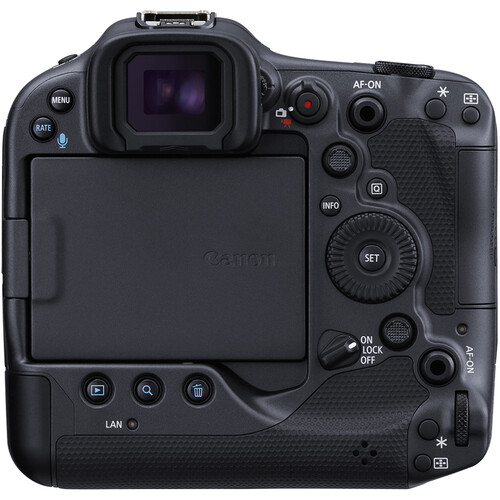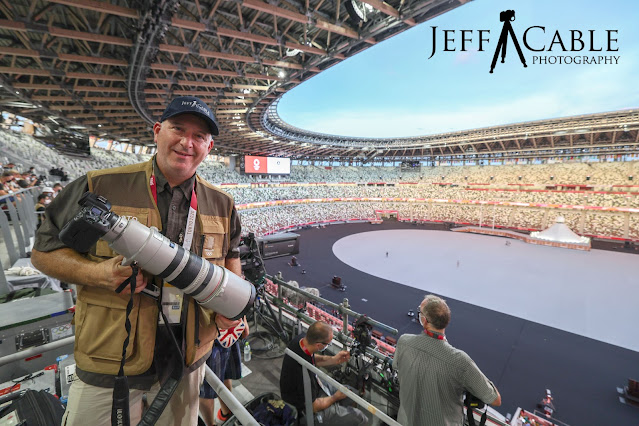The first time I got my hands on the Canon R3 (pre-production) camera was in the weeks before I headed out to Tokyo to photograph the Olympic Games. I was allowed to show a photo of me holding the camera, but I was not allowed to show any more images of the camera or say much more than what I posted. Yes, it was a tease, but I was bound by the NDA I signed with Canon.
Now the camera has been officially announced and I can talk freely. Normally I would have pre-written this blog and posted on the day of Canon's announcement, but I was flying back from spending a month in Africa and did not have a chance to do so. So...let me tell you about my experience with the Canon R3.
First impression
On that day back in early July, I was waiting anxiously for the FedEx box to arrive and could not wait to rip it open to see the R3 in person. The first thing I noticed was that the camera was noticeably smaller and lighter than the Canon 1DX MKIII. I even put it next to the 1DX to confirm my first thoughts. I was also happy to see that it used the same batteries as the Canon 1D series.Having used the Canon R5 and Canon R6 for some time, all the buttons and dials were in familiar places, so using the camera seemed easy. The one noticeable difference was the over-sized eye piece, which was made larger to support the new eye control. More on that later...
I played with the camera and took a bunch of test photos. I had a lot of questions about the setup, and had numerous calls with the technical people at Canon to fully understand the new features and to fine-tune the camera for what I wanted. My goal was to set up the camera for optimal shooting at the Olympics, with dual back-button focus and having the eye-control trained for my pupil. As it turned out, I ended up using a newer version of the Canon R3 in Tokyo and had to retrain that camera, but I made notes of everything I had changed at home, so it was easy to make those adjustments at the Olympics.
Real-world use at the Olympics
My challenges with the Canon R3
Honestly, there are not many things to pick on with this new camera. But you know me, and you know that I am really demanding with my camera gear. The one thing that I did not like about the Canon R3 is that Canon chose to have one CFexpress card slot and one SD card slot. I always write RAW images to both cards when I am shooting (for redundancy), and since the SD card is so much slower than the CFexpress card, I have numerous times when I filled the camera buffer and missed some great shots. For the USA Water Polo women's gold medal game, I decided to pull the SD card and shoot to just the CFexpress card. I could not risk having buffer issues during this key game!
I should mention that I shot the entire Olympics in RAW+JPEG mode, since I could not easily open a Canon R3 RAW file and had to work with the JPEGs for the whole Games. I wanted to capture the RAW files, since I plan on re-editing the best photos from the RAW files in the weeks to come, once Adobe has added the R3 to Adobe Camera RAW. Shooting RAW+JPEG really slows things down, and I don't plan on shooting that way in the future.
Overall impression of the camera
Not everyone needs a camera that performs at the level of the Canon R3, but for those of us who need to fire off 30 frames per second, need the super fast focus speeds, and want the very best, this camera is awesome. Ever since using the Canon R5 and Canon R6 for my photography, I knew that mirrorless was the way to go. The new Canon R3 brings all the power of the Canon 1D series to the mirrorless world, and that is a welcome addition to the Canon line-up. Canon may not like me saying this, but for anyone looking to purchase a Canon 1DX MKIII, I would recommend going with the Canon R3. I think that the R series is the future for Canon, with all the new lenses coming out for these new bodies, and the camera just performs better in so many respects.
__________________________________________________________________________
Subscribe to the Jeff Cable Photography Blog by clicking HERE!
__________________________________________________________________________
If you are interested in purchasing ANY equipment, please click here to go to B&H Photo, as I get a referral from them if you enter this way. It does not change the cost to you in any way, but it helps me keep this blog up and running.
__________________________________________________________________________
Check out my upcoming photo tours to amazing places around the world. I have photo tours to Africa, Costa Rica, Cuba, Europe, Asia, India and more. And Canon will loan you any gear you want for FREE for any of my tours.



